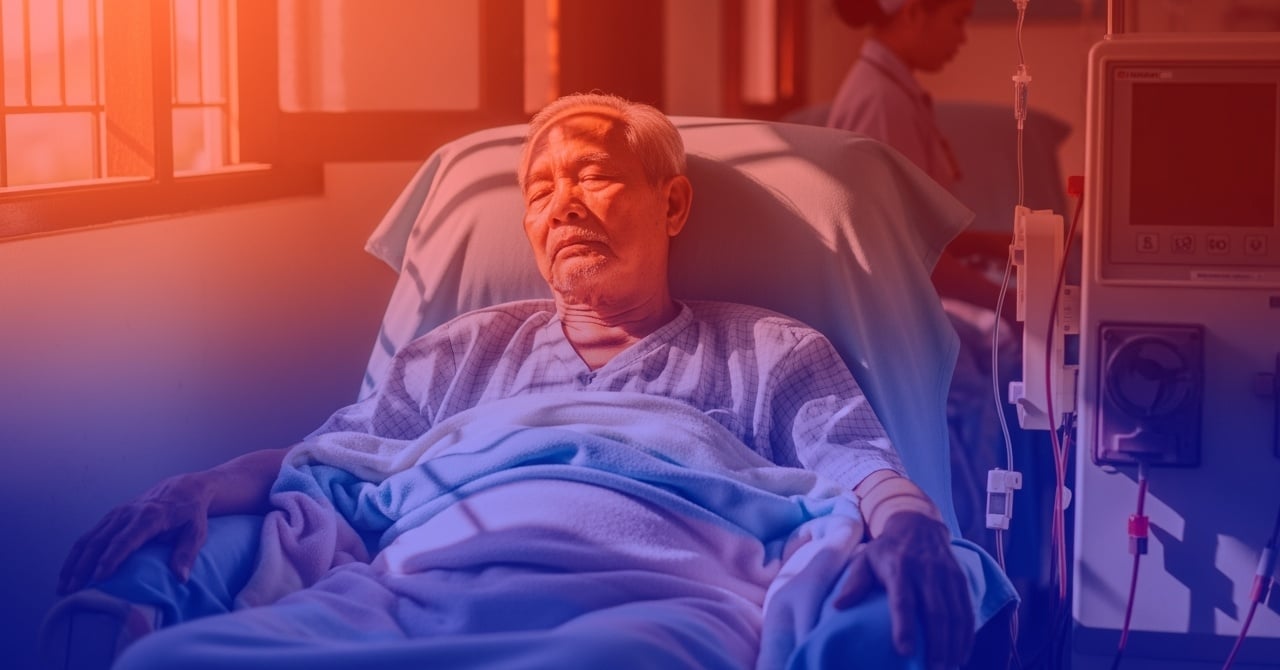Living with kidney failure is a heavy burden, both physically and financially. But beginning 2025, PhilHealth is expanding its dialysis benefits to give patients and their families more breathing room.
Keep on learning to learn more about the updated session limits, per-case rates, home dialysis rules, and filing process so you can maximize your benefits.

Hemodialysis Coverage and Session Limits
Starting 2025, PhilHealth will cover up to 156 hemodialysis sessions per year for patients with Chronic Kidney Disease Stage 5 (CKD5).
This is an increase from 144 sessions in previous years.
The per-session rate is Php 6,350, meaning a patient can receive up to Php 990,600 annually.
This expansion is meant to reduce — or ideally remove — out-of-pocket expenses for patients, especially with the No Balance Billing policy for essential services.
In short: if you rely on hemodialysis, you now have more sessions covered and fewer chances of paying extra.
Peritoneal Dialysis (PD) Coverage
PhilHealth is also strengthening its Peritoneal Dialysis (PD) Z Benefit Package, effective January 1, 2025.
- Adults: Coverage for Continuous Ambulatory Peritoneal Dialysis (CAPD) ranges from Php 389,640 to Php 510,140, depending on the type of PD solutions needed.
- Pediatric patients: Coverage is much higher, from Php 510,000 to Php 1.2 million, since children may need either CAPD or Automated Peritoneal Dialysis (APD).
What’s included?
- Catheter insertion
- Outpatient treatment for PD-related infections
- Laboratory tests
- Medicines needed for dialysis care
This means both children and adults with kidney failure have more tailored coverage that fits their actual needs.
Home Dialysis Rules
Home dialysis is allowed under PhilHealth, but there are guidelines to protect patients:
- Patients and caregivers must undergo proper training.
- Dialysis catheters should only be inserted by certified professionals.
- Patients must be registered in the PhilHealth Dialysis Database.
- Solutions provided by PhilHealth cannot be sold or shared.
- Providers must not charge for services already covered, though they may charge for non-medical amenities.
This allows patients to receive care in the comfort of their homes while maintaining safety and accountability.
Filing Steps and Claim Process
To avail of dialysis benefits, here’s what you need to do:
- Enrollment in PhilHealth Dialysis Database (PDD) – Required for all patients.
- Certification by a nephrologist – Confirms diagnosis of CKD Stage 5 and gives dialysis orders.
- Documents to submit:
- PhilHealth Benefit Eligibility Form (PBEF) per session
- Claim Form 4 (CF4) signed by the attending physician
- Claim Signature Form (CSF) signed by both patient and nephrologist
- Dialysis center’s role – They prepare billing statements and e-claims. Supporting medical records and documents must also be uploaded.
- Important note – Doctors must only sign claim forms after treatment, not before. This avoids errors and prevents fraud.
Quick Summary
| Aspect | Details |
| Hemodialysis Sessions | Up to 156 sessions/year |
| Per-Session Rate | Php 6,350 |
| Annual Hemodialysis Cap | Php 990,600 |
| Peritoneal Dialysis Coverage | Adults: Php 389,640 – Php 510,140; Pediatrics: Php 510,000 – 1.2M |
| Home Dialysis | Training required, registration in PDD, strict usage rules |
| Filing Requirements | Enrollment in database, nephrologist certification, proper claim forms |
| No Balance Billing | Applies to essential dialysis services |
Frequently Asked Questions (FAQs)
- How many hemodialysis sessions are covered by PhilHealth in 2025?
Up to 156 sessions per year, with Php 6,350 covered per session. - Does PhilHealth really cover 100% of dialysis costs?
Yes, for essential services under the No Balance Billing policy. However, some facilities may charge for non-medical amenities. - What about peritoneal dialysis (PD)?
Adults can get coverage worth Php 389,640 to Php 510,140 yearly, while children may receive Php 510,000 to Php 1.2 million depending on age and dialysis type. - Can I do dialysis at home?
Yes, especially for PD patients, but you must undergo training and register in the PhilHealth Dialysis Database.
What Filipinos Say About the New Dialysis Coverage
“Finally, dagdag ginhawa para sa mga pasyente. Hindi na masyadong mabigat sa bulsa.” – Maria, dialysis patient’s daughter
“Mas magaan ang pakiramdam knowing PhilHealth now covers more sessions. Parang may kasabay kami sa laban.” – Jojo, CKD patient
“Sana lahat ng centers sundin talaga ang no balance billing. Malaking tulong ito sa pamilya namin.” – Liza, caregiver
These voices reflect the relief and hope that the expanded coverage brings to ordinary Filipinos.
Watch: Gastsusin sa gamot ng kidney transplant patients, sasagutin na rin ng PhilHealth
PhilHealth now covers the cost of maintenance medicines for kidney transplant patients, lifting a heavy burden off Filipino families.
President Ferdinand Marcos Jr. launched the expanded benefit package during his visit to NKTI, showing direct support for long-term care.
The coverage includes not just the surgery but also post-operative treatment, giving patients a better shot at recovery.
PhilHealth also supports dialysis and angioplasty, making treatment more reachable for those with chronic conditions.
Final Thoughts
PhilHealth’s enhanced dialysis coverage in 2025 brings much-needed financial relief to thousands of Filipino families.
With higher session limits, increased per-session rates, and broader coverage for both adults and children, patients now have better access to life-saving treatments.
It’s not just about covering more sessions—it’s about giving every Filipino with kidney failure a fair chance to live longer and better without the crushing weight of medical bills.
If you or your loved one needs dialysis, take the time to register properly and keep your documents complete. This way, you can focus on healing while PhilHealth helps ease the financial load.
